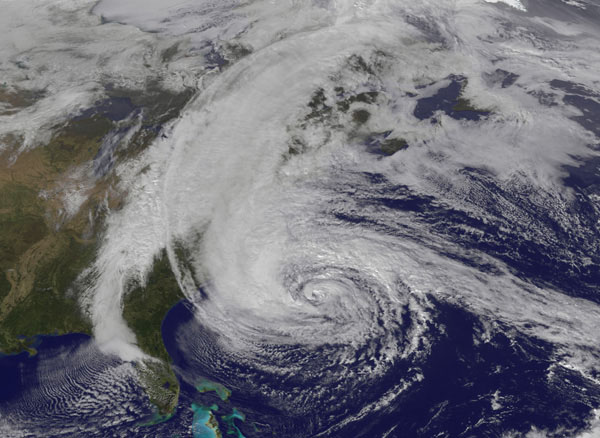When Disaster Strikes: Five Lessons for Infrastructure Owners and Operators


Source: NASA
As the owners and/or operators of 15 clean energy facilities within 75 miles of the shoreline, hurricanes and nor’easters are often part of our weather patterns and are constantly on our minds. We spend a lot of time, energy, and resources to prepare for extreme weather conditions.
All of the planning and strategizing available could not anticipate or prepare for the sheer destruction as a result of Superstorm Sandy. Every business and individual in the Northeast was severely affected by Sandy, and our organization was no different, as a number of facilities were directly in the path of the storm, and were severely impacted.
There were a number of lessons both in preparation for the storm and following the storm that helped us to respond to a situation that no one could fully prepare for or imagine, and will help us going forward. Here are five.
Preparation
Again, no one could anticipate or imagine the sheer destruction that Sandy would cause. What could be anticipated were situations and lessons learned from natural disasters in the past, including Hurricane Irene in 2011. Instituting immediate lessons learned meetings and strategizing and conducting live disaster response drills over the years allowed us to anticipate fuel supply problems at our facilities.
To combat this, we were able to rent two tankers prior to the storm’s arrival and deploy an in-house “Fuel Supply Team” to work around the clock securing fuel for each location. This made a huge difference, as each facility that was affected had adequate fuel supplies before, during, and immediately after Sandy.
Training
We are fortunate to have senior leaders within our organization who have extensive experience preparing energy facilities for disaster situations, and those leaders have trained countless other members of our team.
While it is impossible to be prepared for every situation, it is imperative that as many team members as possible are well versed not only in what might happen, and how those situations should be dealt with, but actually work with organizational leaders who have dealt with those situations before. Training must occur prior to a natural disaster striking—learning “on the job” during a disaster situation is obviously not optimal.
Fluidity
All of the preparation and training available does not allow a team to anticipate every potential situation when a natural disaster strikes. While we have a number of facilities located within five miles of the Atlantic Ocean, it was an inland facility located on a river waterway that ended up taking on over 18 feet of water during the storm surge.
Though access was a major problem, the expertise and ability to adjust to rapidly changing situations by some of our senior team members led to the establishment of an emergency cogeneration operation in a parking lot in order to ensure that power was available continuously.
Teamwork
One of the reasons that we were able to respond to each situation at each location throughout the Northeast was not because of the leadership of one individual, but the teamwork of many. Every member of our organization was involved in response. Every owner and senior executive was on-site at one of the locations around the clock, working as a part of a team.
We take pride in designing our organization to ensure that all persons—including the two authors of this article—are ready, willing, and able to do any job necessary, from loading gear to digging ditches to installing underground equipment. We believe the greatest example of leadership in a disaster situation is leading by example.
Review and Prepare Again
To date, Sandy was the worst storm we have faced. It will certainly not be the last, which is why immediately conducting lessons learned meetings and implementing these lessons in our disaster response materials going forward, as well as training all members of our teams around these new lessons, is imperative.
While we were prepared and successful in much of our preparation, one situation we were not prepared for was the lack of access for sustained periods of time, as that had never occurred before.
That said, our plans going forward now anticipate lack of access to sites during and following future natural disasters.
As we rebuild and try to resume some semblance of normalcy in the Northeast, the time to plan, prepare, train, and strategize for the next major natural disaster is now—we have all learned valuable lessons in the wake of Sandy, and we need to share what we have learned with each other.
—Frank DiCola and Michael Jingoli are CEO and CFO, respectively, of DCO Energy.